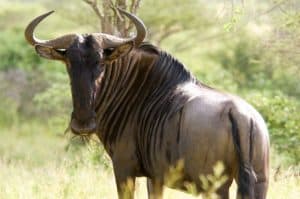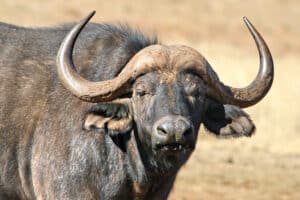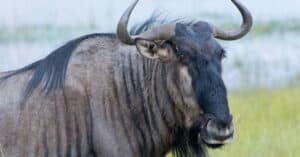Most parents would put their lives on the line when it comes to protecting their children. As it turns out, though, this doesn’t stop with humans. As seen in the video below, animal parents like the wildebeest are also willing to risk it all when it comes to protecting their offspring.
Check Out the Amazing Video Here (Warning: Strong Language)
The video begins with several cheetahs rapidly approaching a herd of wildebeest. At first, it seems like all of the herd is able to escape, leaving the cheetahs—quite literally—in the dust. However, as the video pans to the right and the dust clears, you’ll notice that the cheetahs are actually zeroing in on a small wildebeest calf.
Faced with at least three hungry cheetahs, the nearby mother doesn’t back down, though. The video continues, and the mother repeatedly charges at the cheetahs whenever they dare to tread too close to her calf. At one point, one of the cheetahs is even successful! It manages to capture the calf in its strong jaws, holding the baby wildebeest down as the other two defend themselves against the mother. Even faced with the fact of having to turn her back on two predators, though, the mother shows no hesitation and quickly turns on the third cheetah, causing it to release her calf. This happens once more, and the calf is able to escape and return to the rest of the herd for protection.

Animal parents like the wildebeest are willing to risk everything when it comes to protecting their offspring.
©iStock.com/Scott Canning
About Wildebeest Relationships
Believe it or not, seeing a mother wildebeest reacting in the way portrayed in the video is not uncommon. When a wildebeest calf is first born, it lacks any substantial ways to protect itself. It’s a bit coltish and clumsy, and it seems like it hasn’t quite grown into its body yet. For the first eight or so months of its life, the calf must remain by its mother’s side. This allows for the mother to protect the calf, just like the one below does from the cheetahs. However, the wildebeest will also have the protection of the herd.
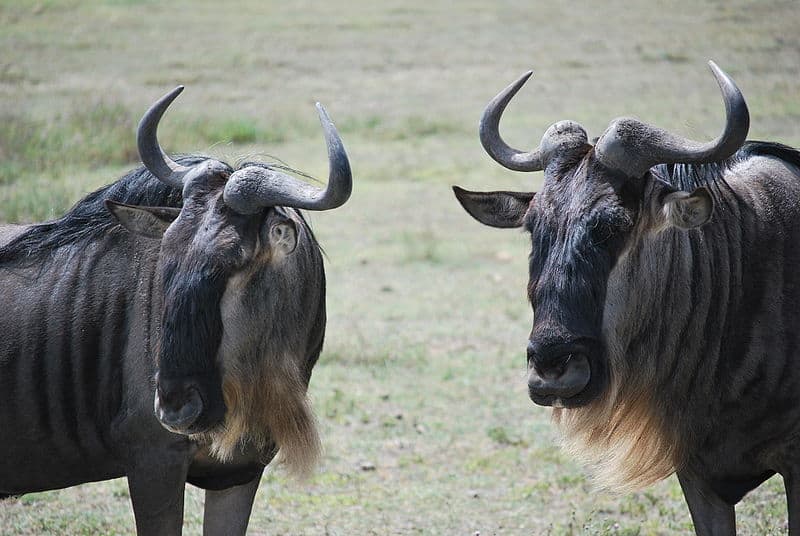
Wildebeest mothers spend at least several months raising and protecting their offspring.
©Chad Rosenthal from Jerusalem, Israel, CC BY 2.0, via Wikimedia Commons – License
Once they reach adulthood, the wildebeest calf typically takes one of two different paths. Females will often remain in the herd with their mother, while males are sent away. This helps maintain social hierarchies while also preventing the gene pool from reducing in size.
How Large Are Adult Wildebeests?
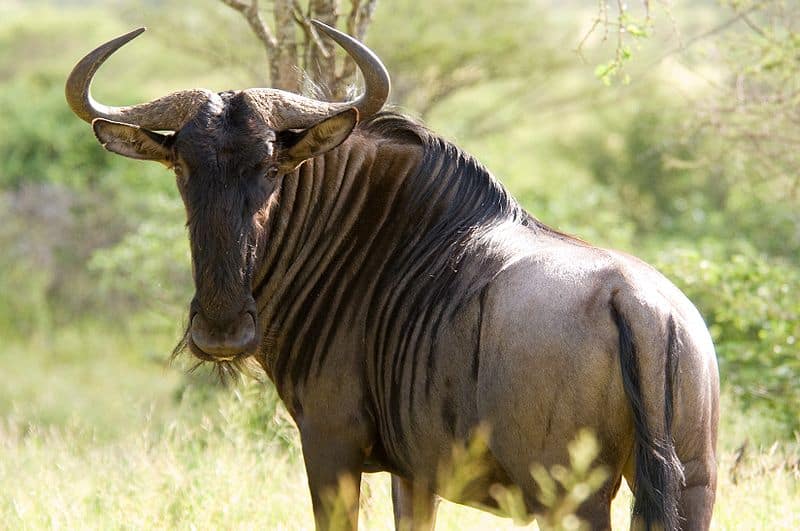
Blue wildebeests are the larger of the two wildebeest species and can stand almost 5 feet tall at the shoulder.
©Chris EasonCamera location24° 45′ 57.79″ S, 31° 53′ 31.74″ E View this and other nearby images on: OpenStreetMap-24.766054; 31.892150, CC BY 2.0, via Wikimedia Commons – License
A member of the antelope family, the wildebeest has two species – blue and black. The blue wildebeest is the larger of the two and can stand almost 5 feet tall (59 inches) at the shoulder and can weigh up to 600 pounds. The black wildebeest can stand between 44 to 47 inches at the shoulder and can weigh up to 400 pounds.
The photo featured at the top of this post is © Karl Weller/Shutterstock.com
Thank you for reading! Have some feedback for us? Contact the AZ Animals editorial team.




